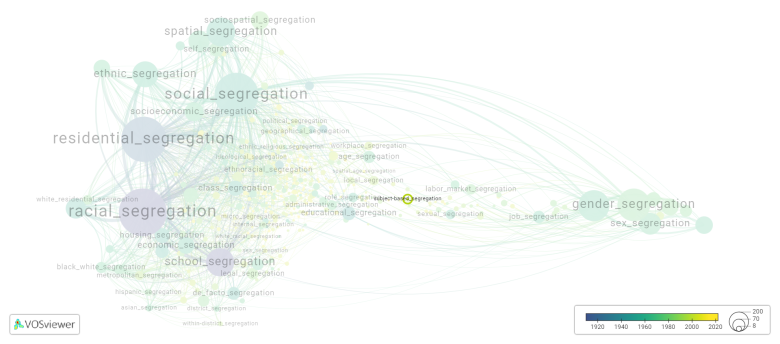Subject-based segregation
Date and country of first publication[1]
2009
United Kingdom
Definition
Subject-based segregation refers to the separation of individuals or groups based on their interests or academic subjects. This could occur in various contexts, such as within schools, organizations, or social environments.
In schools, subject-based segregation can involve tracking or ability grouping, where students are placed into different classes or educational tracks based on their academic performance or skills in specific subjects. For example, students who excel in mathematics might be placed in advanced math classes, while those who struggle may be placed in remedial classes. This can create divisions between students based on their perceived abilities, and may perpetuate inequalities in access to educational resources.
Subject-based segregation can also be seen outside of educational settings. In social environments, individuals may naturally gravitate towards others with similar interests or hobbies, leading to groups or communities forming around specific subjects. For example, people interested in literature might gather in book clubs, while those who enjoy sports might join a local sports team. While this type of segregation is voluntary and often based on personal preferences, it can contribute to the creation of echo chambers or reinforce existing societal divisions.
It is important to note that subject-based segregation can have both positive and negative effects. On one hand, it allows individuals to immerse themselves in their areas of interest, connect with like-minded people, and benefit from specialized education or resources. On the other hand, it can reinforce stereotypes, limit exposure to diverse perspectives, and contribute to the exclusion of individuals who do not fit within the dominant subject-based groups.
Addressing subject-based segregation requires promoting inclusivity, diversity, and equal access across various subjects. This can be achieved through implementing policies and practices that encourage cross-subject interactions, providing resources and opportunities for marginalized groups, combating stereotypes, and fostering an inclusive and supportive environment for all individuals.
Synonyms
The following terms are synonymous with subject-based segregation:
subject based segregation.
References and literature addressing this segregation form under these synonymous terms can be found below.
See also
Related segregation forms
Subject-based segregation is frequently discussed in the literature with the following segregation forms:
gender segregation, vertical segregation

This visualization is based on the study The Multidisciplinary Landscape of Segregation Research.
For the complete network of interrelated segregation forms, please refer to:
References
Notes
- ↑ Date and country of first publication as informed by the Scopus database (December 2023).
At its current state, this definition has been generated by a Large Language Model (LLM) so far without review by an independent researcher or a member of the curating team of segregation experts that keep the Segregation Wiki online. While we strive for accuracy, we cannot guarantee its reliability, completeness and timeliness. Please use this content with caution and verify information as needed. Also, feel free to improve on the definition as you see fit, including the use of references and other informational resources. We value your input in enhancing the quality and accuracy of the definitions of segregation forms collectively offered in the Segregation Wiki ©.
Subject-based segregation appears in the following literature
McTavish D., Miller K. (2009). Management, leadership and gender representation in UK higher and further education. Gender in Management, 24(3), 178-194. https://doi.org/10.1108/17542410910950868
